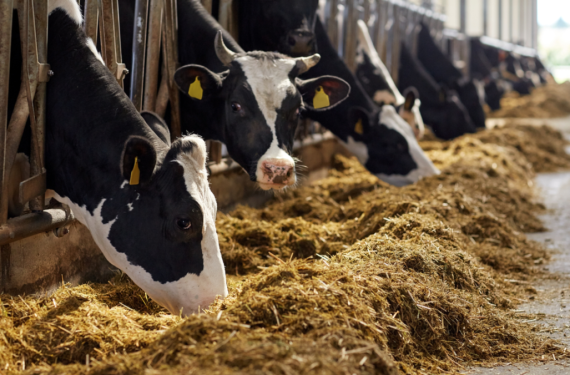A new feed additive developed by DSM inhibits the emission of the greenhouse gas methane by cows, like adding nitrate to the feed does. Animal feed researcher Jan Dijkstra outlines the effect and possibilities.
Are you familiar with Bovaer?
‘Yes, its effectiveness will soon be tested on Dairy Campus, our research and innovation centre for the dairy industry. The test is required for the product to be included in the Annual Nutrient Cycle Assessment (ANCA), an aid for mineral management in the dairy sector.’
What do you expect from the study?
‘With the standard feed rations used in the Netherlands, methane production is expected to go down by about 20 per cent when Bovaer is used. That is a smaller reduction than the 30 per cent that DSM claims on the basis of international research. That is because there is a lot of fibre in Dutch feed. The more fibre there is, the less effective it is.’
Doesn’t adding nitrate to the feed help too?
‘Yes, if you add nitrate, bacteria convert it into ammonia, and less methane is formed as a result. That’s a different approach to Bovaer, which is a molecule that binds to an enzyme that forms methane in the cow’s rumen. It switches that enzyme off. If you use nitrate, you need a lot more: 10 to 15 grams per kilogram feed for a methane reduction of 10 to 20 per cent.’
Does Bovaer work in combination with nitrate?
‘We don’t know yet if you can just add the effect of Bovaer to that of Nitrate. But whatever the case, you can achieve a considerable reduction with these substances. Silage naturally contains nitrate, and Cargill produces it as a pure additive. That company is doing research on nitrate for the ANCA.’
Is this enough to meet the climate targets?
‘The livestock sector has to halve methane emissions in the coming years. With this feed additive, farmers can take a step in the right direction. It does cost money though: the price of milk will have to go up a bit.’

 Photo: Shutterstock
Photo: Shutterstock